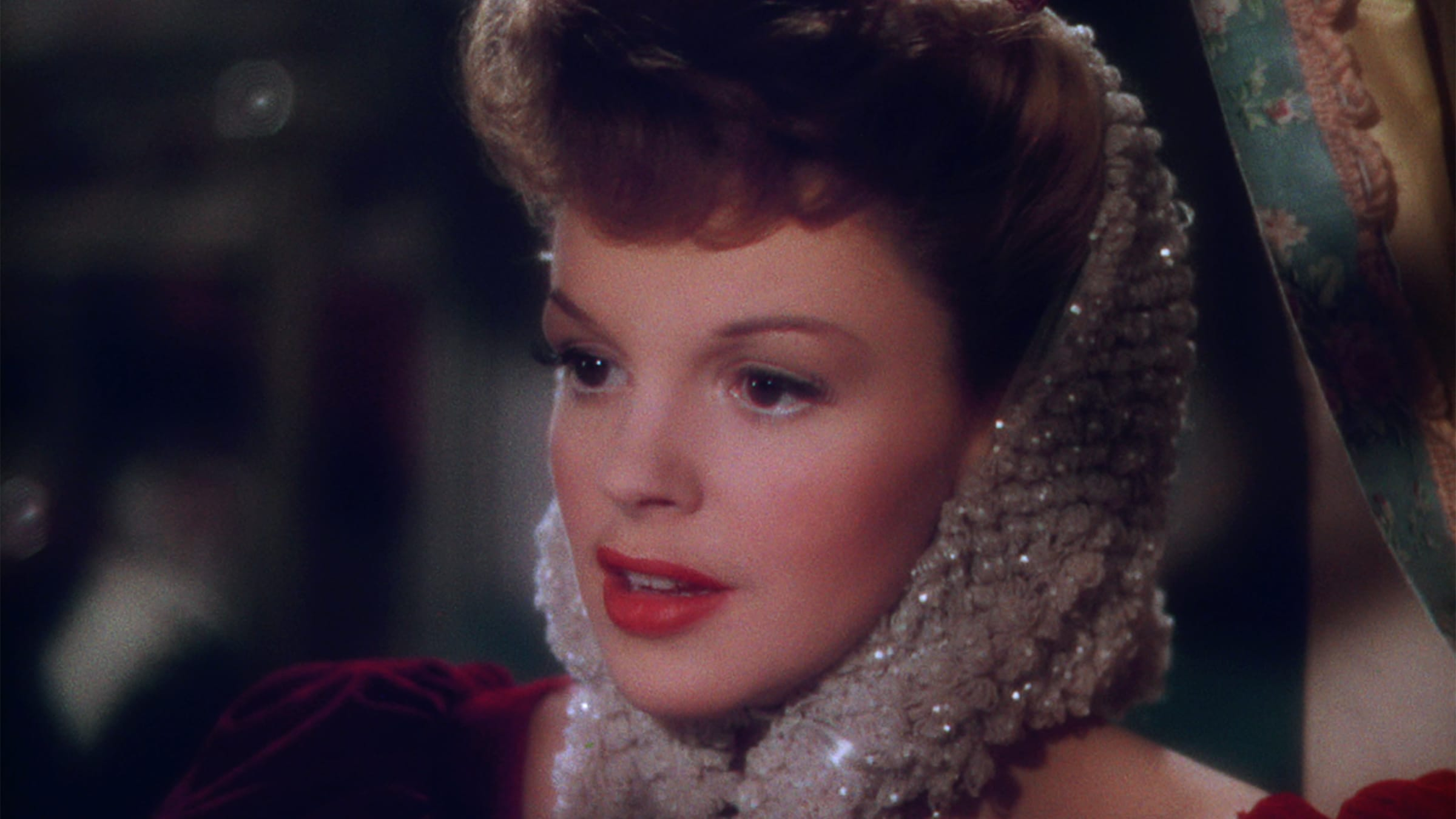MGM’s Stairway to Paradise

Two of the most spellbinding scenes in any Hollywood movie: In the first, Judy Garland, bedecked in a cinched, blue-and-white-striped dress, and topped with a long, auburn wig, sings of her longing for “the boy next door,” her adorable, ginger-peachy neighbor, who seems as yet oblivious to her existence. In the second, Judy is again singing, though this time, rather than comforting herself, she’s attempting to calm little Margaret O’Brien—perched next to her, on the verge of tears—imploring the child to “have yourself a merry little Christmas.” Each scene is an emotional centerpiece and an aesthetic statement of intent in Vincente Minnelli’s Meet Me in St. Louis, and in both, Garland, one of the greatest, most multitalented performers who ever lived, simply . . . sits there. At a window. Looking out at the world, looking back at us. With her patented vocal embodiment of both tremulousness and titanic strength, she gets right to the heartsick essences of Hugh Martin and Ralph Blane’s songs. That’s what matters, the way she hits and attenuates certain words and makes them sound as if they were wrenched from some deep, hidden part of herself: “How can I ignore the boy next door?” “Until then we’ll have to muddle through somehow.” She’s in Technicolor, and so is her voice.
The fireworks set off in these carefully staged yet physically sedentary scenes aren’t simply reflective of Garland’s magnetic brilliance or Minnelli’s compositional confidence. These moments also speak to the revolution of the movie musical that was going on at MGM in the forties. Meet Me in St. Louis was a megahit for the studio in 1944, and it managed to be such a success by breaking all the rules of the genre: more forcefully—and effortlessly—integrating songs into the narrative than ever before, focusing on an everyday American family rather than showbiz folk or aspiring performers, and not making a romantic courtship the sole excuse for the story’s forward motion. What Judy Garland is expressing by singing—and just sitting—is as essential to the emotional integrity and authenticity of the story as any of the dialogue. The turn-of-the-century saga of the Smiths, who are shown over four seasons wrestling with the terrifying prospect of having to leave their beloved St. Louis for that bad Big Apple out east after their patriarch is promised a job transfer, becomes an occasion, not just an excuse, for expression through song. More than anyone else’s, this was the intention and handiwork of producer Arthur Freed, who was all but handed the keys to the musical kingdom by MGM in the early forties, and who forever changed the way we would think of the form.

MGM is often remembered as the dreamiest of the “dream factories,” but in the thirties, the first full decade of sound cinema, musicals were not what it was known for. Back then, Louis B. Mayer’s studio had been most identified by a purposeful classicism and forthright wholesomeness: literary adaptations, biopics, and period pieces were its bread and butter. Other studios had more recognizable musical styles: Paramount’s dance-hall-influenced Ruritanian comedies with Maurice Chevalier; Warner Bros.’ backstage dramas, whose precarious plots were mere pretense for Busby Berkeley’s mind-boggling choreographic showstoppers; RKO’s gossamer screwball romances with Fred Astaire and Ginger Rogers. MGM certainly offered up its own approach, but it was a less splashy one, chiefly defined by the studio’s arch striving for classicism, as illustrated by its Broadway Melody revue franchise; its chaste operetta vehicles for Jeanette MacDonald and Nelson Eddy; and the best-picture-winning The Great Ziegfeld, a biographical treatment of stage impresario Florenz Ziegfeld’s life featuring a couple of elaborate Berkeley-esque numbers thrown in for good measure. But something huge happened at the very end of the decade: The Wizard of Oz. The studio had been keen on finding the right way to adapt L. Frank Baum’s classic 1900 fantasy. Consequentially, Freed, a former Tin Pan Alley songwriter and vaudevillian who had been writing music for the studio, was hired to work on the film, as an uncredited associate producer. It was Freed who suggested turning Oz into a musical in the first place, and who also suggested hiring then-underestimated kid star Garland for the lead role of Dorothy—originally earmarked for Shirley Temple.
Freed’s intuition and taste contributed, of course, to a masterpiece and a box-office smash, and it wouldn’t be long before he was promoted by the studio and given his own department, to be devoted entirely to musicals. That special Freed flavor would gradually develop as the years wore on. No one at MGM—or likely in the entire industry—had a better handle on the kinds of people who would make the movie musical particularly special, even epochal. With his knowledge of and connections to the New York theater world, he began amassing a crew of extraordinary talents. When one thinks of the movie musical, one probably thinks of the MGM musical that Freed helped to develop. Beyond the integration of songs into the plot, as typified by Meet Me in St. Louis, these musicals’ trademarks were visual flights of fancy and abstraction, metatheatrical cleverness that belied their simple plots, and break-the-fourth-wall performative exuberance, even if the performer was just, say, sitting at a window.
“The MGM musical dove, with full-body somersaults, into its own movieness.”
“Even in the space- and time-shattering world of musicals, fantasy has its limits.”





